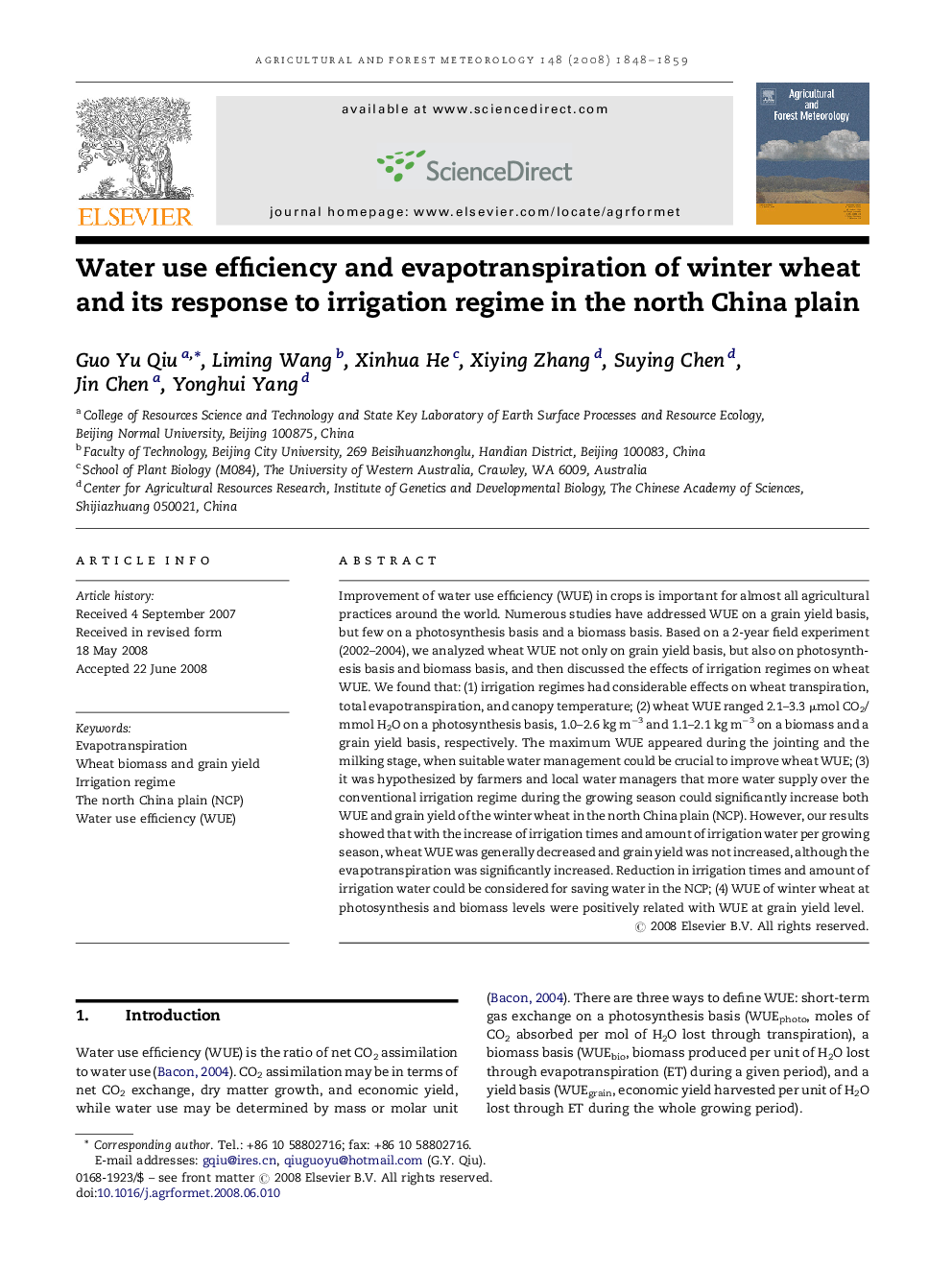| کد مقاله | کد نشریه | سال انتشار | مقاله انگلیسی | نسخه تمام متن |
|---|---|---|---|---|
| 82417 | 158395 | 2008 | 12 صفحه PDF | دانلود رایگان |

Improvement of water use efficiency (WUE) in crops is important for almost all agricultural practices around the world. Numerous studies have addressed WUE on a grain yield basis, but few on a photosynthesis basis and a biomass basis. Based on a 2-year field experiment (2002–2004), we analyzed wheat WUE not only on grain yield basis, but also on photosynthesis basis and biomass basis, and then discussed the effects of irrigation regimes on wheat WUE. We found that: (1) irrigation regimes had considerable effects on wheat transpiration, total evapotranspiration, and canopy temperature; (2) wheat WUE ranged 2.1–3.3 μmol CO2/mmol H2O on a photosynthesis basis, 1.0–2.6 kg m−3 and 1.1–2.1 kg m−3 on a biomass and a grain yield basis, respectively. The maximum WUE appeared during the jointing and the milking stage, when suitable water management could be crucial to improve wheat WUE; (3) it was hypothesized by farmers and local water managers that more water supply over the conventional irrigation regime during the growing season could significantly increase both WUE and grain yield of the winter wheat in the north China plain (NCP). However, our results showed that with the increase of irrigation times and amount of irrigation water per growing season, wheat WUE was generally decreased and grain yield was not increased, although the evapotranspiration was significantly increased. Reduction in irrigation times and amount of irrigation water could be considered for saving water in the NCP; (4) WUE of winter wheat at photosynthesis and biomass levels were positively related with WUE at grain yield level.
Journal: Agricultural and Forest Meteorology - Volume 148, Issue 11, October 2008, Pages 1848–1859